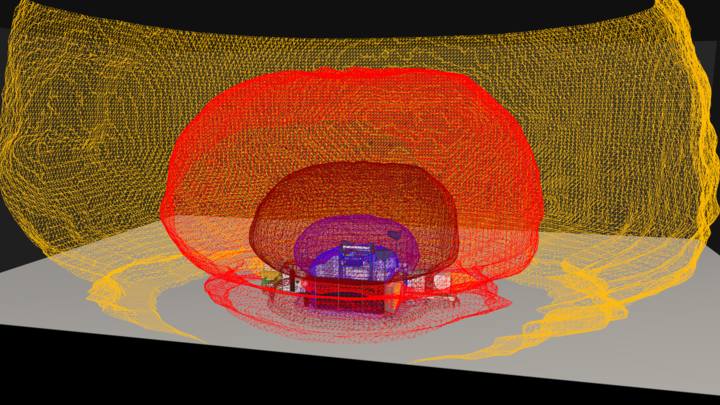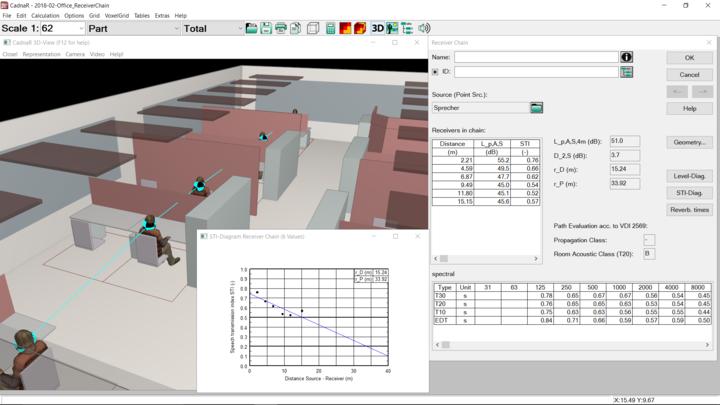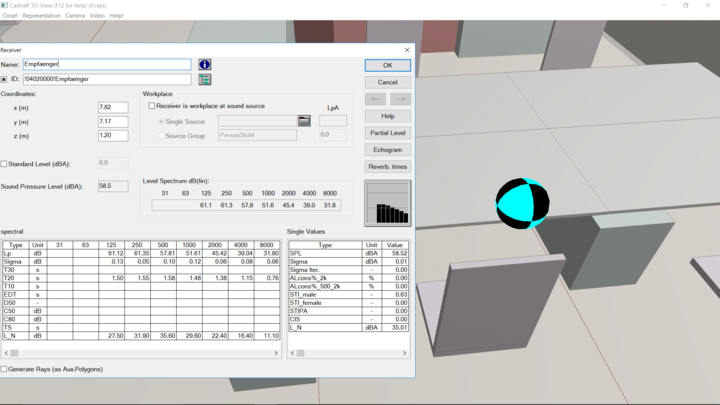Results and standards
CadnaR makes the analysis and postprocessing of calculation results easy depending on the application and software options present. Techniques like the display of sound rays in 3D, particle ping-pong, partial levels and arithmetic operations with grids are used to enhance the analysis of the acoustic situation while giving support to the whole assessment process.






